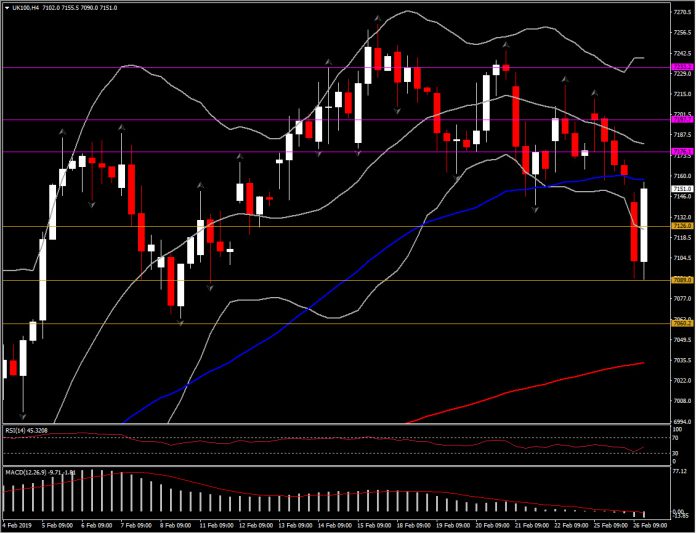UK Prime Minister May has spoken to the House of Commons. Following what proved to be accurate reports of her pivot to putting an option for a Brexit delay on the table, there had been an inkling that she would back down from the threat of a no deal Brexit.
But instead, with all the amplification that the political theatre that the House of Commons puts on, she expressly said that a no deal scenario remain one of three choices:
- A second vote on the Withdrawal Agreement, to be held by no later than 12th March.
- If the Withdrawal Agreement has been rejected, the government would table a motion to be voted on by 13th March asking if the House supports leaving the EU “without a withdrawal agreement and a framework for a future relationship” on 29th March, i.e. a no-deal Brexit.
- If the House has rejected both the Withdrawal Agreement and a no-deal Brexit, the government would on 14th March bring forward a motion on whether parliament wants to seek a “short limited extension” to Article 50, i.e. delay the Brexit process. If the House votes for this, then the government would seek approval for the extension with the EU (which Brussels would likely grant).
The announcement has generated an explosion of debate and news noise. However the central takeaway is that the Parliament will have the final say on whether there will be a no deal Brexit (which was always going to be the case, but this makes it explicit and timetabled).
Both a delay in Brexit and the avoidance of a no-deal Brexit are now looking probable, since the government’s Withdrawal Agreement is unlikely to fly as the EU is unlikely to concede on the Irish backstop, and Brexiteer-in-chief Rees-Mogg has already stated that his group won’t back it simply to avoid a short extension of Brexit, and given that the majority in parliament are against no deal.
The choices then would be for May to attempt to form a cross-party consensus for a new Brexit deal and/or hold a second referendum on EU membership.
Meanwhile in the stock market, the stronger Pound puts pressure on UK bonds. European stock markets have lost ground in general, with the Euro Stoxx dipping 0.1%. The UK100 is underperforming, but is above its worst levels. Despite the 1.13% decline in the UK100, PM May’s comments helped trim declines on the FTSE and the other European bourses.
As UK100 moves northwards of 20-day SMA, the next barrier to the upside stands between 7,167-7,176 area (200-day EMA and 50% Fib. level since February’s peak). If the latter breaks then this could suggest a retest of 7,197 level and Thursday’s peak at 7,233. Support comes at 7,126, 7,089 and 7,060.
Meanwhile, in the currency market, the speech inspired a pullback in Sterling, with Cable drifting to levels under 1.3170, over 60 pips down on the 4-month high seen in the London AM session.
But this is only a partial correction of recent gains. The Pound remains up by nearly 1% from week-ago levels and remains up by 3.2% on the year-to-date.
The Pound is still trading at a marked discount to pre-Brexit referendum levels in 2016, however it is expected to remain in the ascendant, as overall, the odds for a no-deal Brexit are looking lower than before. Cable has trend support at 1.3100-1.3130.
Click here to access the Economic Calendar
Andria Pichidi
Market Analyst
Disclaimer: This material is provided as a general marketing communication for information purposes only and does not constitute an independent investment research. Nothing in this communication contains, or should be considered as containing, an investment advice or an investment recommendation or a solicitation for the purpose of buying or selling of any financial instrument. All information provided is gathered from reputable sources and any information containing an indication of past performance is not a guarantee or reliable indicator of future performance. Users acknowledge that any investment in FX and CFDs products is characterized by a certain degree of uncertainty and that any investment of this nature involves a high level of risk for which the users are solely responsible and liable. We assume no liability for any loss arising from any investment made based on the information provided in this communication. This communication must not be reproduced or further distributed without our prior written permission.



















